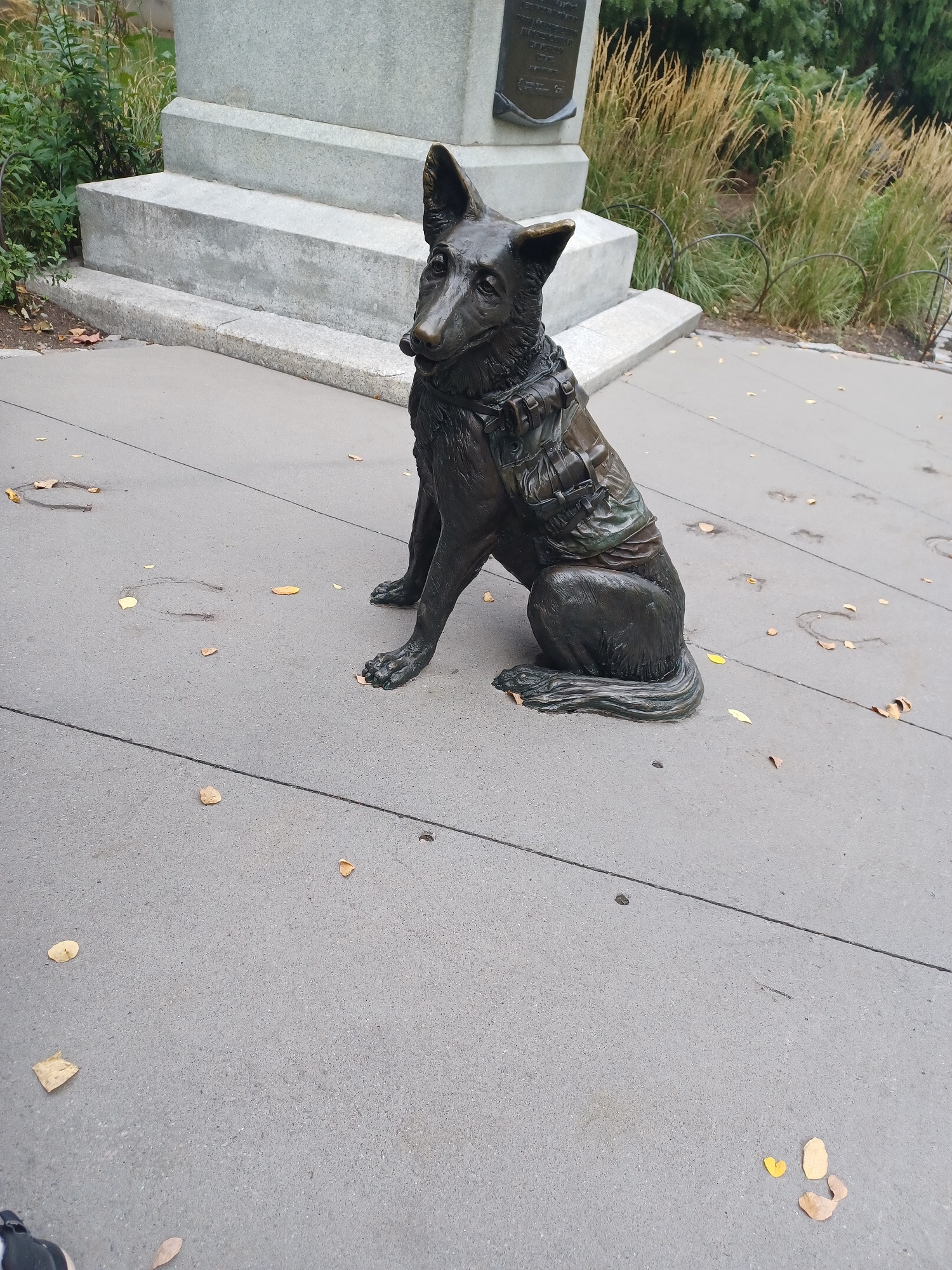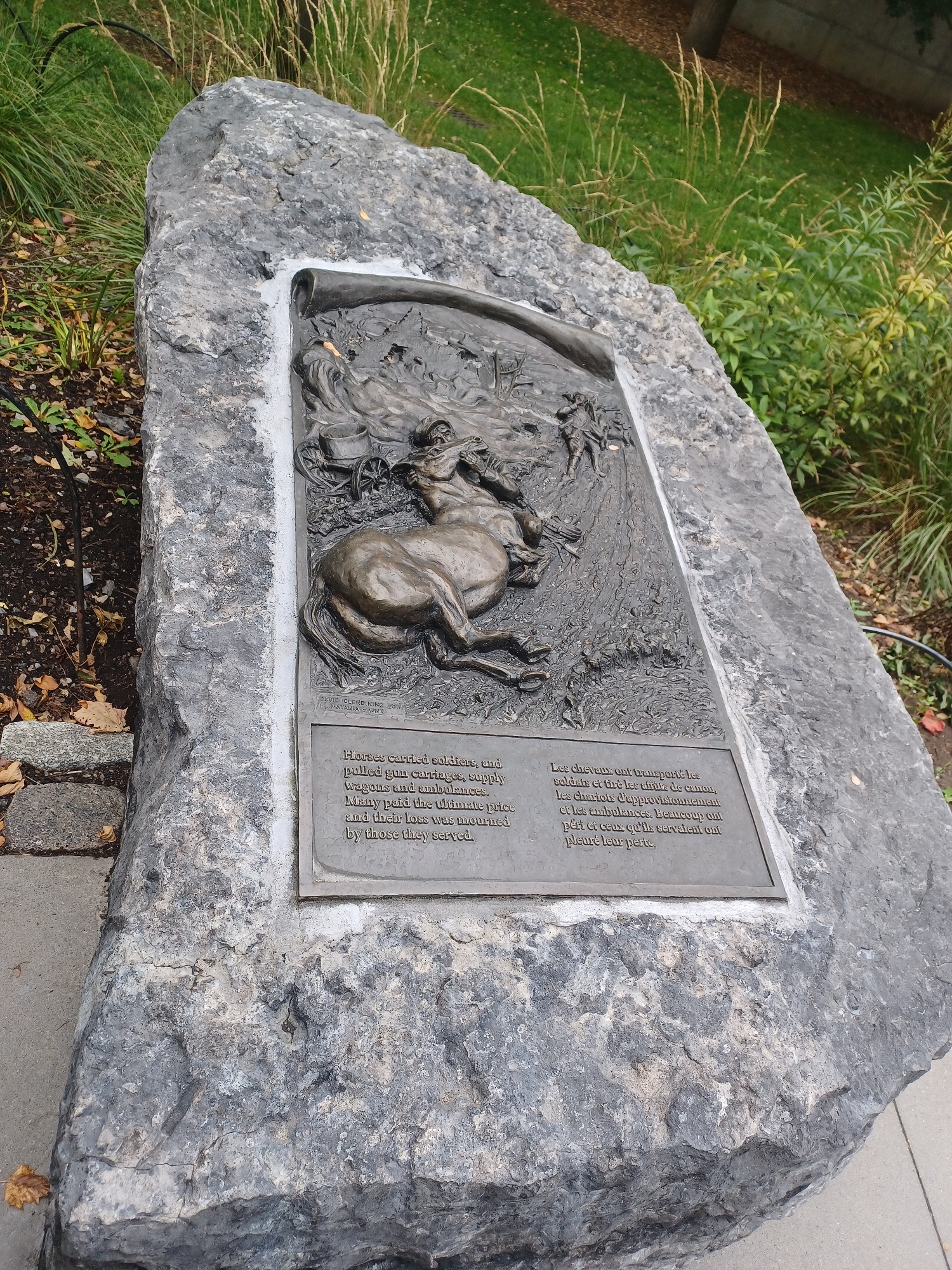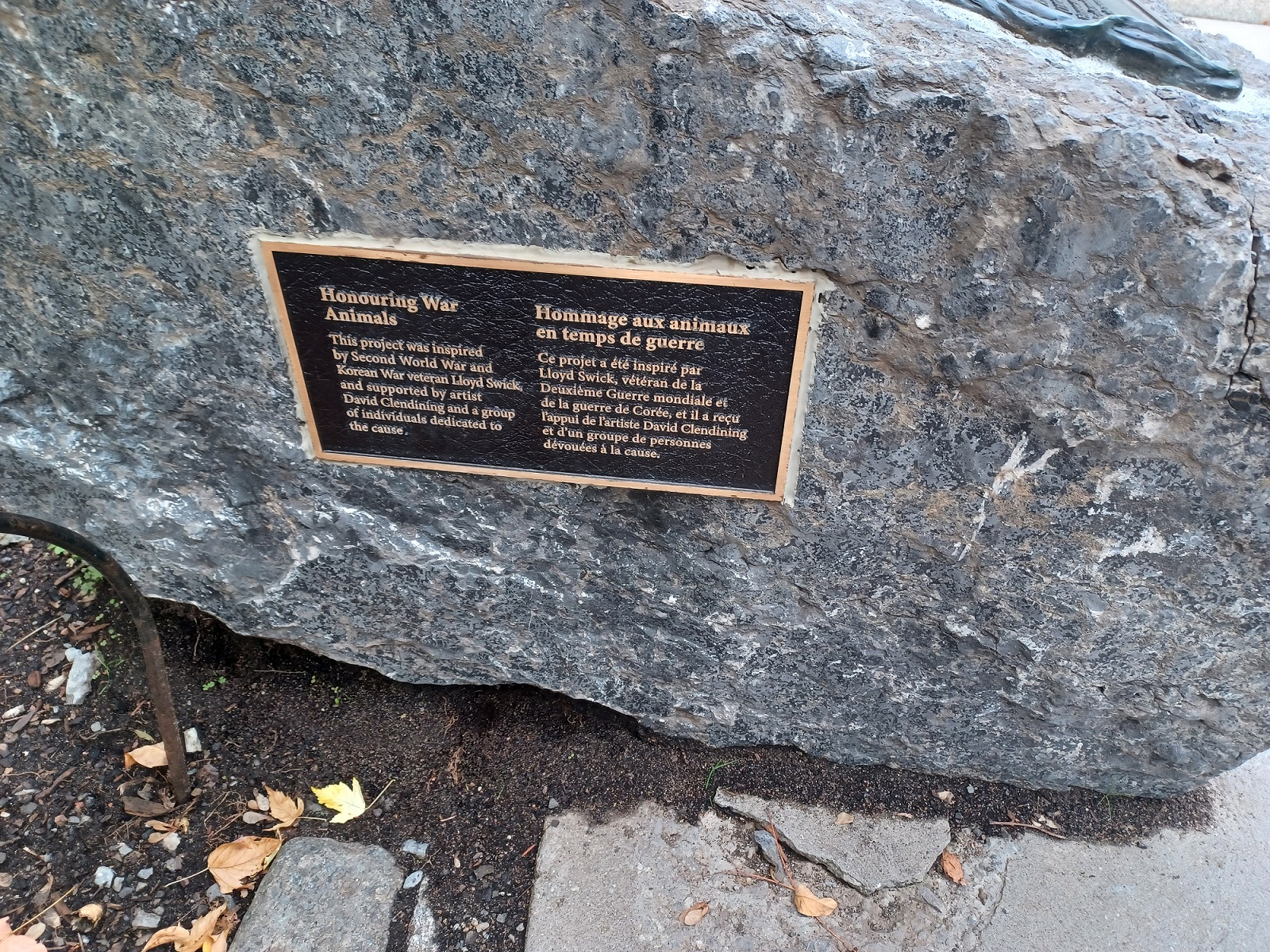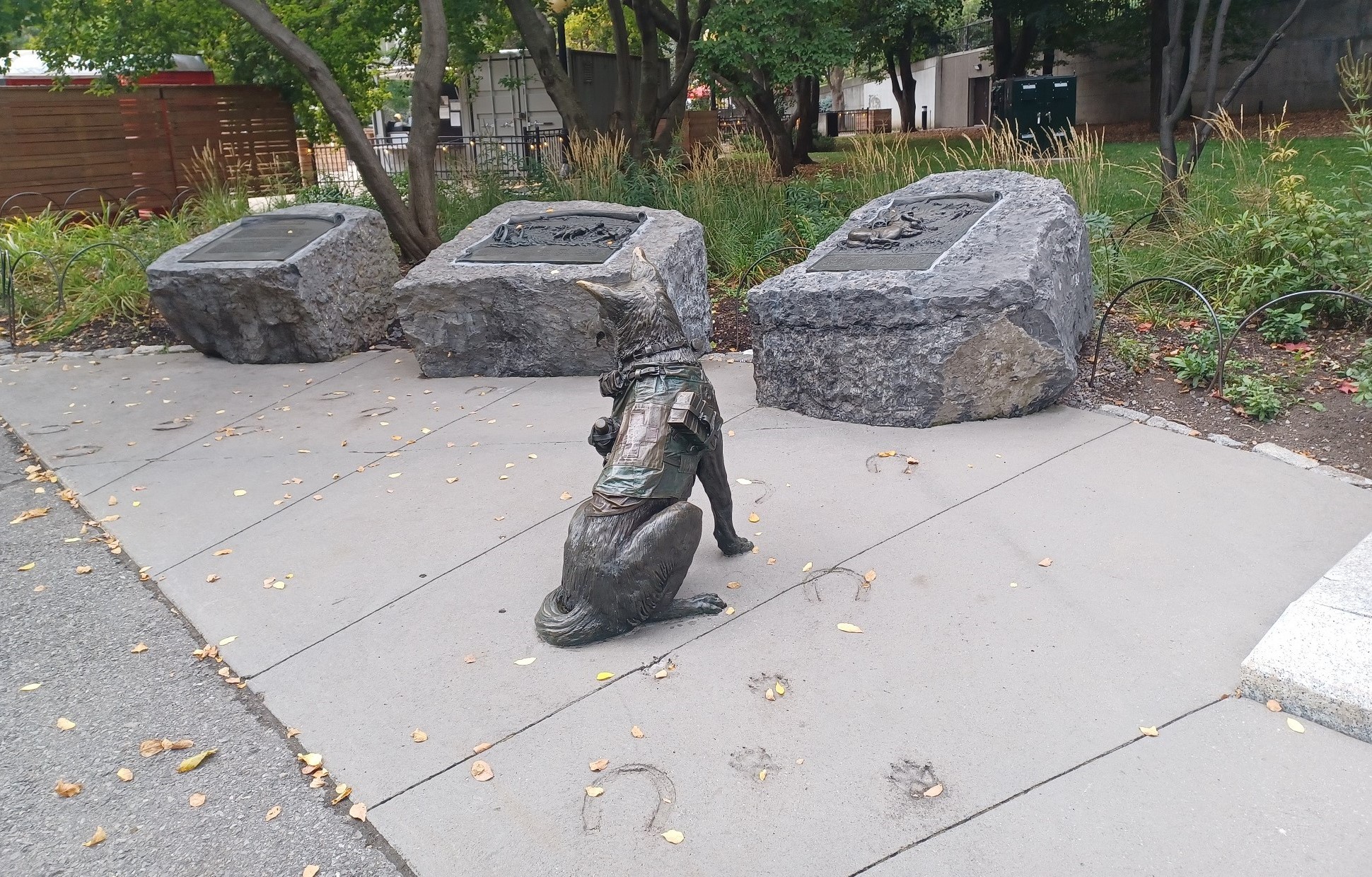The Animals in War Dedication honours animals that served alongside their human comrades in war. It is symbolically set next to the South African War Memorial, a battle for which Canada supplied 50,000 horses for mounted troops. The footprints of dogs, horses and mules are stamped into the concrete of the Animals in War Dedication, representing the marks they left on the battlefield.
A bronze, life-sized statue of a medical service dog stands guard over the dedication. It is wearing an authentic replica of a medical backpack that war dogs used during the First World War. Canada’s military still employs dogs to this day. The Animals in War Dedication was created in 2012 by Canadian artist and sculptor David Clendining.
Three bronze plaques depict animals in war and provide interesting facts about their roles, their sacrifices, and their unwavering loyalty. Among the roles animals have played in war:
- Mules: carried panniers and artillery.
- Horses: carried mounted troops and hauled field guns.
- Carrier pigeons: delivered messages to specific destinations.
- Dogs: used as messengers, medical assistants, bomb detectors, and search and rescue workers.





